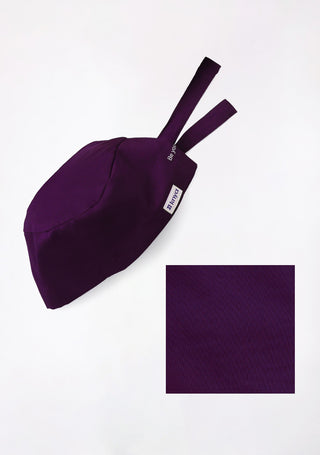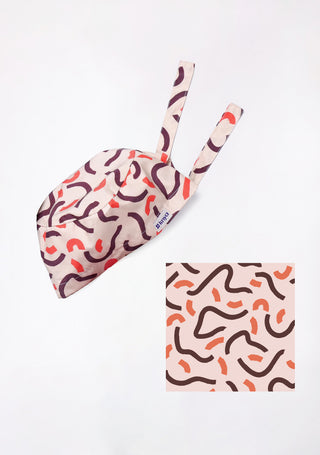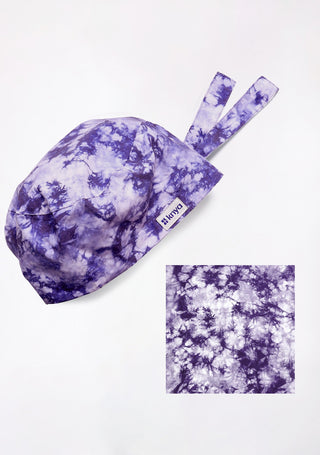In healthcare, a uniform is more than just clothing—it is a symbol of trust, responsibility, and professionalism. Whether it’s scrubs, lab coats, or nursing dresses, these garments must endure long hours, spills, and constant movement while maintaining a clean and polished look. Proper care not only extends the life of uniforms but also ensures healthcare workers feel comfortable and confident throughout their shifts.
At Knya, every nursing uniform is crafted with precision, comfort, and durability in mind. But even the highest-quality fabric requires proper maintenance to stay fresh and functional. This guide will walk through the essential steps to maintain and care for nursing uniforms, ensuring they remain in top condition shift after shift.
Click here to explore comfortable lab coats and discover our complete collection of comfortable and stylish medical apparel
1. Choose High-Quality Fabrics
The foundation of a long-lasting nursing uniform lies in the fabric. Investing in uniforms made from high-quality blends ensures durability, comfort, and ease of care.
-
Polyester – Strong, wrinkle-resistant, and ideal for busy shifts.
-
Cotton-Polyester Blends – Combine the softness of cotton with the resilience of polyester.
-
Spandex Blends – Offer flexibility, stretch, and comfort for physically demanding roles.
Knya uniforms use carefully selected fabric blends that withstand frequent washing, resist stains, and maintain color vibrancy. Choosing such fabrics reduces wear and tear, helping uniforms last longer.
2. Follow Proper Washing Instructions
Washing is where most uniforms face damage. Following the right method can extend their life significantly.
-
Wash after every shift: This is crucial for hygiene and safety.
-
Separate colors: Wash whites, darks, and lights separately to avoid bleeding.
-
Cold water wash: Prevents shrinkage and keeps colors from fading.
-
Mild detergent: Avoid harsh chemicals that weaken fibers.
-
Skip bleach: Use stain removers designed for healthcare fabrics instead.
A consistent routine ensures scrubs and lab coats remain fresh, hygienic, and durable.
3. Drying the Right Way
Drying is just as important as washing. High heat can weaken fibers and shrink fabrics, while the wrong methods cause wrinkles.
-
Air dry whenever possible – Hanging uniforms helps retain shape and freshness.
-
Tumble dry on low heat – If necessary, use a gentle cycle to avoid shrinkage.
-
Avoid overcrowding the dryer – Overloading traps moisture and creates wrinkles.
By drying with care, the structure and comfort of uniforms stay intact.
4. Ironing and Steaming for a Polished Look
A neat and wrinkle-free uniform reflects professionalism.
-
Iron cautiously – Use low settings for polyester and blended fabrics.
-
Steam instead of iron – Steaming is gentler and reduces direct fabric contact.
-
Iron while damp – Makes the process quicker and more effective.
Knya scrubs and lab coats are designed with wrinkle-resistant fabrics, making them easy to maintain with minimal ironing.
Ready to explore our amazing surgical caps collection? Browse the best here
5. Store Uniforms Correctly
How uniforms are stored affects their lifespan. Proper storage keeps them fresh and ready for use.
-
Hang lab coats and dresses – Prevents wrinkles and maintains structure.
-
Fold scrubs neatly – Saves space and reduces creases.
-
Avoid damp storage areas – Prevents mildew, odors, and bacteria growth.
Organized storage ensures uniforms remain clean and presentable for every shift.
6. Regular Maintenance and Repairs
Even durable uniforms can face small damages over time. Addressing them early helps prolong their use.
-
Repair small tears immediately – Prevents further fabric damage.
-
Replace worn-out uniforms – Faded or torn uniforms compromise professional appearance.
-
Treat stains quickly – Use targeted removers before washing.
Knya provides scrubs and lab coats designed to withstand daily challenges, but quick maintenance ensures they look newer for longer.
7. Use Fabric Softener Sparingly
While fabric softener adds softness, overuse can reduce moisture-wicking ability and trap odors.
- Use only occasionally.
- Opt for softeners made for activewear.
- Skip it altogether if uniforms already feel comfortable.
This keeps fabric breathable and effective during long shifts.
8. Prevent Odor Build-Up
Due to frequent exposure to sweat and bacteria, odor control is essential.
-
Use odor-fighting detergents designed for activewear.
-
Dry uniforms quickly to prevent bacterial growth.
-
Store in ventilated spaces to keep them fresh.
By following these steps, uniforms maintain a clean and professional scent.
9. Rotate Your Uniforms
Using the same set repeatedly shortens its life. Rotation distributes wear and allows time for proper washing and drying.
- Keep at least 3–4 sets of uniforms.
- Rotate daily to reduce strain on individual garments.
- Use rotation to maintain freshness across all sets.
Knya offers a variety of scrubs and lab coats, making it easier for healthcare professionals to keep multiple sets ready.
10. Invest in Quality from the Start
Caring for uniforms starts with choosing the right ones. High-quality uniforms resist damage, maintain comfort, and look professional longer.
Knya scrubs, lab coats, and nursing dresses are made with durability and comfort in mind, reducing the effort needed to maintain them. By investing in premium healthcare attire, professionals save time, effort, and money in the long run.
Conclusion
Caring for nursing uniforms is about more than cleanliness—it’s about maintaining professionalism, hygiene, and comfort during long shifts. From choosing the right fabrics and washing carefully to proper storage and odor prevention, every step contributes to extending the life of uniforms.
With Knya, healthcare professionals can rely on scrubs, lab coats, and dresses designed for durability and ease of care. By combining high-quality uniforms with proper maintenance, professionals not only look their best but also ensure their attire reflects the dedication they bring to patient care.












